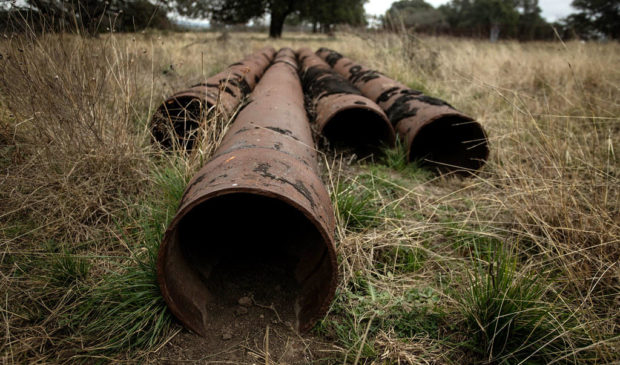Newsletter Signup
The Austin Monitor thanks its sponsors. Become one.
Most Popular Stories
- Council members celebrate unanimous defeat of bill that proposed putting Austin under state control
- A once-banned type of building is back in favor – and the Planning Commission approves
- Eviction crisis spreads as affordability pressures worsen
- Austin churches answer prayers for affordable housing – by building it themselves
- East Austin’s ‘wishbone’ bridge takes shape as concrete beams almost span Lady Bird Lake
-
Discover News By District

Hill Country landowners get ready for fight over another proposed pipeline
Wednesday, October 2, 2019 by Mose Buchele, KUT
Charles Chaney Jr. has Utopia on his mind. The Texas City resident is a month away from retirement and Utopia is the name of the scenic Hill Country town where his family has lived for generations. He had planned to build a house on land he owns there near his brother and sister.
Now, he’s not so sure.
About a month ago, he received a letter from Enterprise Products Partners informing him of its plans to run a 30-inch crude oil pipeline through the land and requesting access to conduct a survey.
“It upsets me,” Chaney says. “It makes me have to hold off right now, because where I had planned on putting my house – it would be too close to the pipeline.”
Chaney is one of many landowners along the pipeline’s planned route from Midland to a point southeast of San Antonio.
Like Kinder Morgan’s Permian Highway natural gas pipeline, the project has sparked opposition from residents who think the Hill Country is not a good place for a pipeline. They worry about water quality and oppose the company’s use of eminent domain to take private property.
“We are all calmly going about our task to be stewards of the land, and out of the blue these letters started showing up,” said Merry Langlinais, president of the Bandera Canyonlands Alliance. “You can imagine that people were taken aback.”
Langlinais says she has not seen a detailed plan for the pipeline’s route, so her group is piecing together a map based on letters Enterprise has sent to property owners.
“We know that it’s going to cross the Sabinal River several times,” she said, “and before it can even get to our Canyonlands, it has to cross over the recharge zone for the Edwards Aquifer.”
The Rivard Report was the first non-trade news outlet to break news of the pipeline. It also published a copy of a presentation containing a map of the project it says came from Enterprise.
In an email to KUT, Rick Rainey, Enterprise’s vice president of public relations, called the information in the Rivard Report “premature” and said the company is “looking at a number of different routes.”
“It is highly unlikely that the route of the proposed pipeline would go through the recharge zone of the aquifer,” wrote Rainey, who declined KUT’s request for an interview.
Bandera County Judge Richard Evans said Monday the company delivered the same copy of the presentation to his office.
“The PowerPoint is very poor, as far as being able to tell where county lines are, but I can tell it’s at the very west end of our county,” he said.
Evans said the pipeline project could be a “tradeoff” for the county: If the pipeline reduces oil tanker truck traffic, as promised on page six of the presentation, it could improve regional road safety.
“Of course, you have private property rights,” he said, “and these people are not just going to roll over.”
At the start of the last legislative session, some Texas lawmakers had hoped to overhaul the system by which the state government gives private pipeline companies the power of eminent domain; that is, the ability to take private land for their projects with little or no oversight. Some proposed a system that mandated more public notice and input on pipeline projects, akin to what’s required in the planning of electric transmission lines.
However, by the time lawmakers left Austin, the only major piece of pipeline legislation that passed was a bill that increases penalties against those who protest against pipelines.
This story was produced as part of the Austin Monitor’s reporting partnership with KUT. Photo by Julia Riehs/KUT.
The Austin Monitor’s work is made possible by donations from the community. Though our reporting covers donors from time to time, we are careful to keep business and editorial efforts separate while maintaining transparency. A complete list of donors is available here, and our code of ethics is explained here.
You're a community leader
And we’re honored you look to us for serious, in-depth news. You know a strong community needs local and dedicated watchdog reporting. We’re here for you and that won’t change. Now will you take the powerful next step and support our nonprofit news organization?







